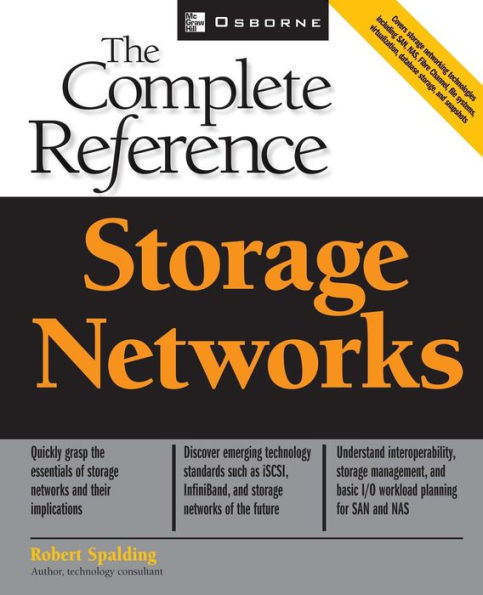The Barnes & Noble Review
Storage networks aren’t sexy, but 40–60 percent annual data growth rates are forcing enterprises to pay attention. SAN technology is notoriously complex, so Robert Spalding’s clear and intelligent guide is especially welcome.
Spalding begins by explaining why client/server storage models are bumping up against their limits; and how unifying enterprise storage can improve scalability, availability, manageability, and the business value of IT.
He offers practical introductions to hardware components and bus interfaces; and new insight into the performance-critical interrelationships between databases, filesystems, and storage systems. Next, he moves on to Network Attached Storage, showing how NAS evolved, which problems it solves, and why its file-oriented I/O architecture limits its effectiveness.
Which brings us to SANs. Here, Spalding is exhaustive without ever falling prey to jargon. You’ll walk through SAN architectures, hardware devices such as Fibre Channel switches, and the software that drives them; and configuration/integration options from data centers to tape backup devices. There’s an excellent chapter on I/O workloads and capacity planning (which needn’t be a black art); followed by practical guidance on handling the disparate characteristics of OTLP, web services, and data warehousing applications.
You’ll learn how to integrate SAN and NAS systems; utilize storage networks to ensure business continuity; manage availability; and protect your data using SANs that don’t include many security features. Spalding wraps up with two detailed case studies and a very thorough glossary. Bill Camarda
Bill Camarda is a consultant, writer, and web/multimedia content developer. His 15 books include Special Edition Using Word 2000 and Upgrading & Fixing Networks for Dummies, Second Edition.



